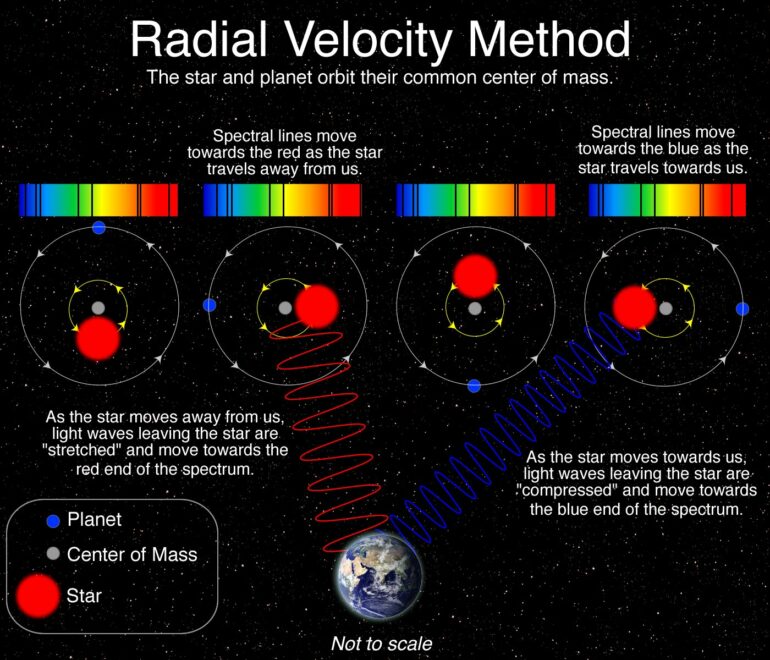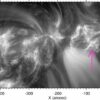Astronomers from the Leibniz Institute for Astrophysics Potsdam (AIP) and the Vatican Observatory (VO) teamed up to spectroscopically survey more than 1,000 bright stars that potentially host exoplanets.
The team presents precise values of 54 spectroscopic parameters per star in the first of a series of papers in the journal Astronomy & Astrophysics and released all its data to the scientific community. This unprecedented large number of parameters will be essential to interpreting the stellar light and finding connections between the stars’ properties and their possibly still unknown planets.
Stars tell stories about themselves, and sometimes about their undiscovered planets. Their language is light; it reveals many physical properties of a star, including its temperature, pressure, motion, and chemical composition. Researchers analyze the light with a method called quantitative absorption spectroscopy.
Telescopes capture starlight and spectrographs break it up by wavelength into a rainbow-like spectrum which is the star’s light fingerprint. When astronomers know these parameters precisely, they can use them to test their theoretical models of stars. This often reveals that the models have some shortcomings, or that observations of stellar spectra are still too imprecise.
But sometimes, it reveals that a star has a surprising story for astronomers. That is what motivated this team to make an ultra-precise survey of possible planet-hosting stars.
“Because stars and their planets form together, the question arose whether the existence of certain chemical elements in a stellar atmosphere, or their isotopic or abundance ratios, is indicative of a planetary system,” explains Prof. Klaus G. Strassmeier, lead author, director at AIP and principal investigator of the survey.
Astronomers have hypothesized that the amounts of different chemical elements within a star could hint that the star has terrestrial planets (rocky worlds like Earth or Mars), could suggest ages for those planets, and could even provide clues that the star has “eaten” some of its planets. This will need further investigation, and the now released data lay the foundations for such studies.
Of the over 5,000 confirmed exoplanets (planets orbiting other stars than the Sun), 75% were discovered from space by observing a star’s light being reduced because of a planet transiting in front of it. NASA’s Transiting Exoplanet Survey Satellite (TESS) mission discovered exoplanets just this way.
It yielded more exoplanets when observing those parts of the sky furthest from the ecliptic (the plane in which the Earth orbits the Sun), called the ecliptic poles. Observatories in the northern hemisphere can observe the Northern Ecliptic Pole, and this survey of potential planet-hosting stars within this region is named the Vatican-Potsdam Northern Ecliptic Pole (VPNEP) survey.
The survey concentrated on the richest observing field of TESS, an area of the sky approximately 4,000 times the size of the full moon. All approximately 1,100 potentially planet-hosting stars in this field were investigated. Up to 1.5 hours of telescope time was required to gather enough of a star’s light to make a single high-quality spectrum. With several visits per star, it took five years to obtain the survey data.
The survey made use of telescopes at two sites: In Arizona, the VO’s Alice P. Lennon Telescope and Thomas. J. Bannan Astrophysics Facility (Vatican Advanced Technology Telescope or VATT) fed light to the Potsdam Echelle Polarimetric and Spectroscopic Instrument (PEPSI) and took spectra of dwarf stars with unprecedented precision. On Tenerife, the AIP’s STELLA (STELLar Activity) Observatory used the STELLA Echelle Spectrograph to capture light of giant stars with lower, but still high, precision.
Dr. Martina Baratella, one of AIP’s postdoctoral researchers involved in the survey, comments, “The spectra revealed elements that are among the most difficult to observe.” Abundance ratios like carbon to iron or magnesium to oxygen hint towards the existence and age of otherwise unseen rocky planets. Prof. Strassmeier adds, “While it will take time to fully analyze the data from the survey, we expect soon to announce subsequent discoveries.”
More information:
K. G. Strassmeier et al, VPNEP: Detailed characterization of TESS targets around the Northern Ecliptic Pole, Astronomy & Astrophysics (2023). DOI: 10.1051/0004-6361/202245255
Provided by
Leibniz Institute for Astrophysics Potsdam
Citation:
Discovering new worlds with quantitative spectroscopy (2023, February 28)



